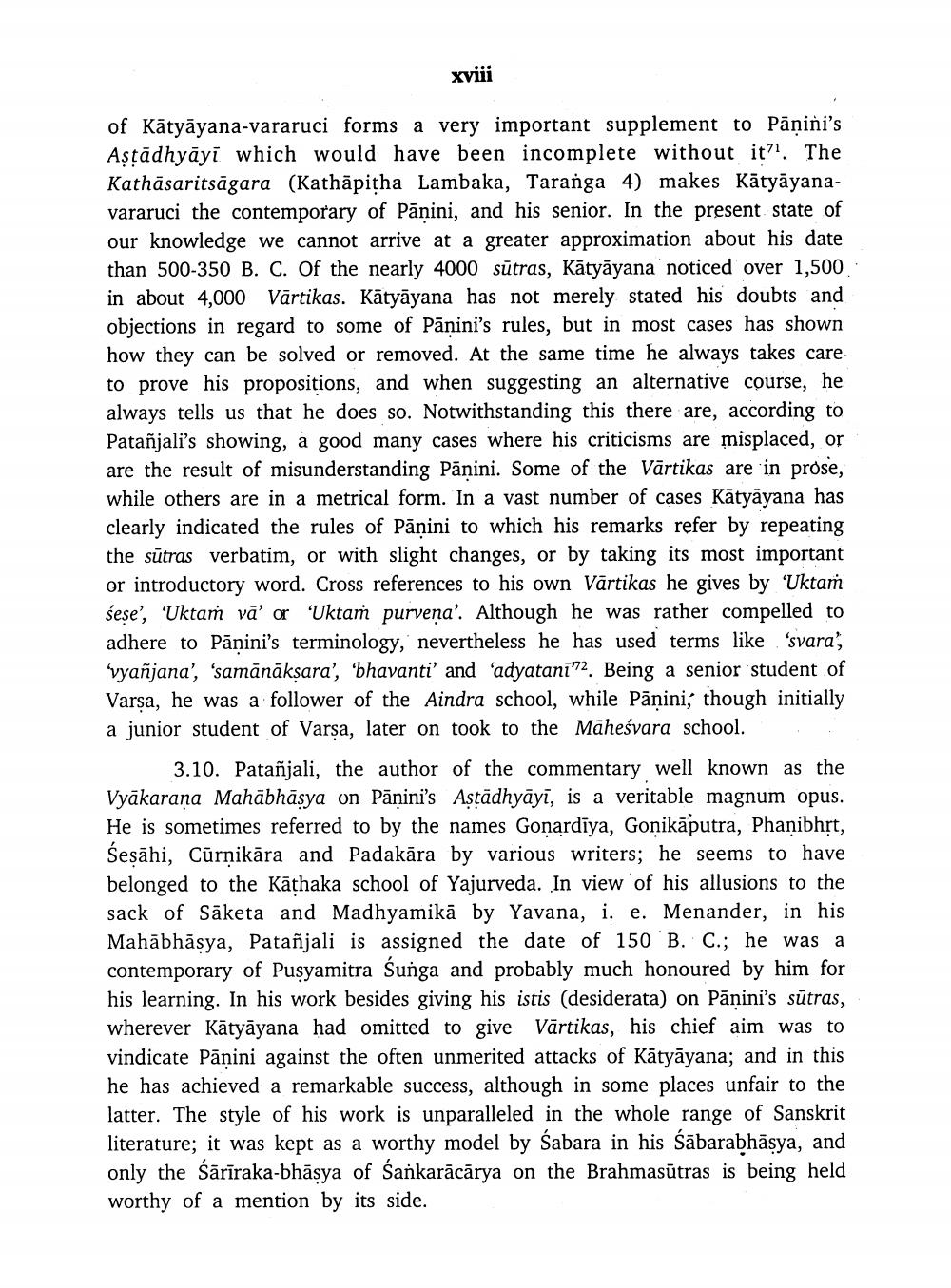________________ xvii of Katyayana-vararuci forms a very important supplement to Panini's Astadhyayi which would have been incomplete without itl. The Kathasaritsagara (Kathapitha Lambaka, Taranga 4) makes Katyayanavararuci the contemporary of Panini, and his senior. In the present state of our knowledge we cannot arrive at a greater approximation about his date than 500-350 B. C. Of the nearly 4000 sutras, Katyayana noticed over 1,500 in about 4,000 Vartikas. Katyayana has not merely stated his doubts and objections in regard to some of Panini's rules, but in most cases has shown how they can be solved or removed. At the same time he always takes care to prove his propositions, and when suggesting an alternative course, he always tells us that he does so. Notwithstanding this there are, according to Patanjali's showing, a good many cases where his criticisms are misplaced, or are the result of misunderstanding Panini. Some of the Vartikas are in prose, while others are in a metrical form. In a vast number of cases Katyayana has clearly indicated the rules of Panini to which his remarks refer by repeating the sutras verbatim, or with slight changes, or by taking its most important or introductory word. Cross references to his own Vartikas he gives by 'Uktas sese', 'Uktam va' or 'Uktas purvena'. Although he was rather compelled to adhere to Panini's terminology, nevertheless he has used terms like 'svara' vyanjana', 'samanaksara', 'bhavanti' and 'adyatani'72. Being a senior student of Varsa, he was a follower of the Aindra school, while Panini, though initially a junior student of Varsa, later on took to the Mahesvara school. 3.10. Patanjali, the author of the commentary well known as the Vyakarana Mahabhasya on Panini's Astadhyayi, is a veritable magnum opus. He is sometimes referred to by the names Gonardiya, Gonikaputra, Phanibhrt, Sesahi, Curnikara and Padakara by various writers; he seems to have belonged to the Kathaka school of Yajurveda. In view of his allusions to the sack of Saketa and Madhyamika by Yavana, i. e. Menander, in his Mahabhasya, Patanjali is assigned the date of 150 B. C.; he was a contemporary of Pusyamitra sunga and probably much honoured by him for his learning. In his work besides giving his istis (desiderata) on Panini's sutras, wherever Katyayana had omitted to give Vartikas, his chief aim was to vindicate Panini against the often unmerited attacks of Katyayana; and in this as achieved a remarkable success, although in some places unfair to the latter. The style of his work is unparalleled in the whole range of Sanskrit literature; it was kept as a worthy model by Sabara in his Sabarabhasya, and only the Sariraka-bhasya of Sankaracarya on the Brahmasutras is being held worthy of a mention by its side.




